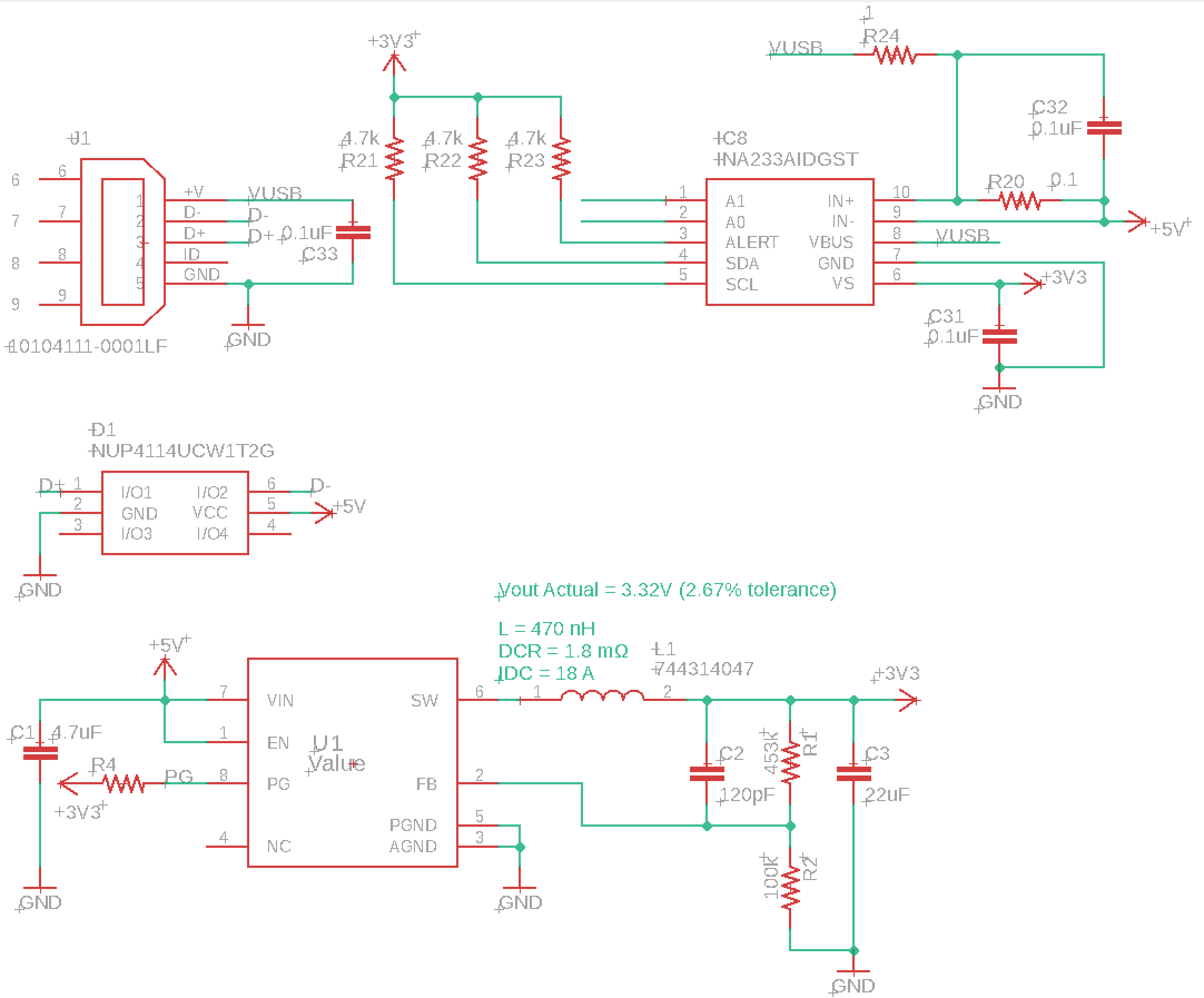Other Parts Discussed in Thread: TPS62821, CC3220SF, INA226, INA233, INA231
Hi, guys. It's my first time using the INA260. I'm trying to create a custom PCB that uses micro USB 5V.
This will be connected to the buck converter and the TPS62821 (TPS62821DLCR) buck converter will power the CC3220SF Wi-Fi MCU.
I want to use the INA260 to see how many currents will be drawn.
- Is this a correct way to track how many currents are driven from the micro USB?
- Since most micro USB can provide 0.5A current, can the INA260 handle this amount of current? I wish to know the maximum electrical characteristics, please.



